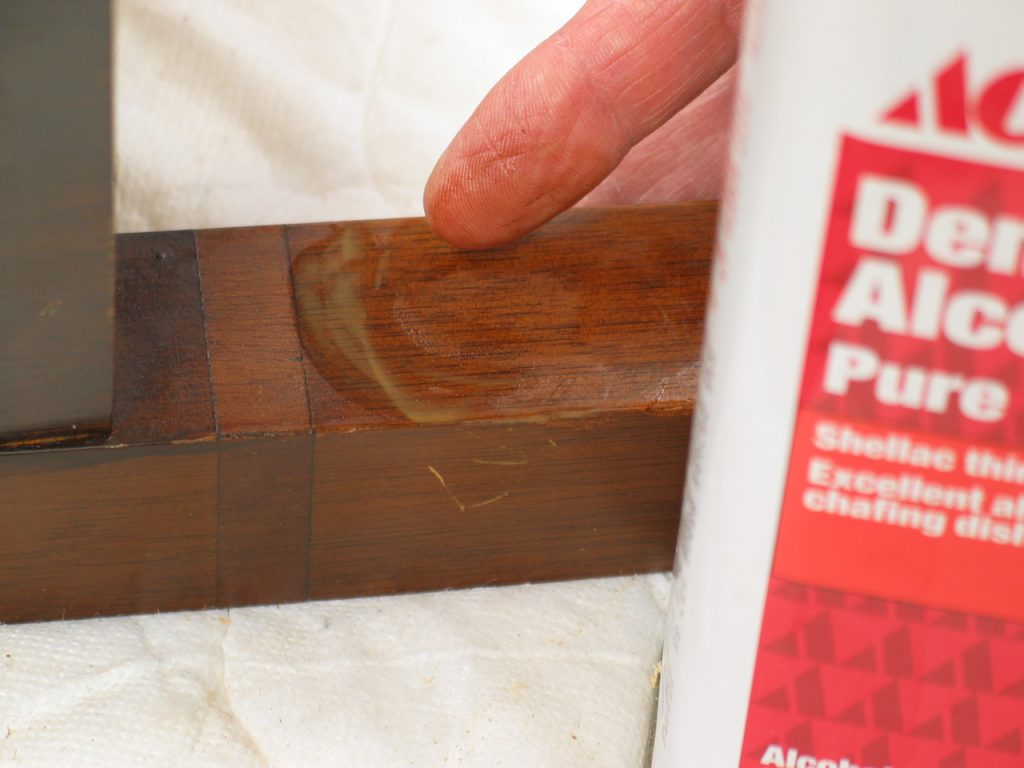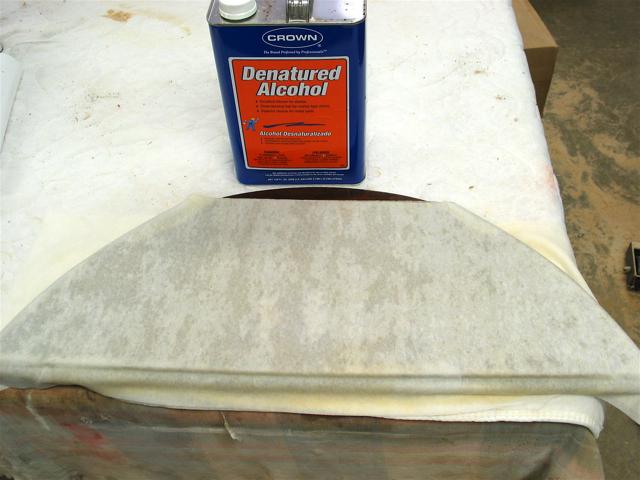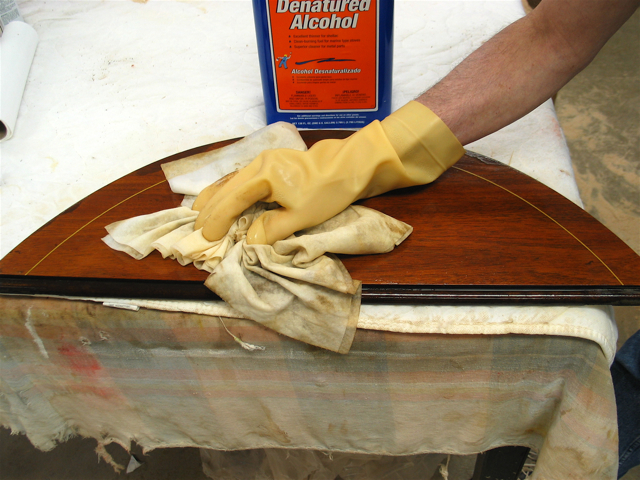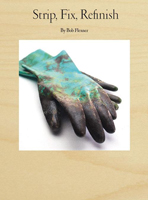We may receive a commission when you use our affiliate links. However, this does not impact our recommendations.

To test whether a finish is shellac or lacquer, dab alcohol or lacquer thinner onto the finish to see if the solvent makes the finish sticky or removes it.
With shellac and lacquer finishes, which are the finishes used on almost all old furniture and woodwork, you can use their solvent for stripping instead of a paint-and-varnish remover. Depending on the object being stripped, I often find this method easier in the sense of spending less total time. It’s also less messy.
Use denatured alcohol for shellac and lacquer thinner for lacquer. You can test the finish to find out which it is by dabbing a little of each solvent onto the finish. The alcohol will soften shellac and make it sticky or remove it. Lacquer thinner will do the same to lacquer.

To liquify a shellac or lacquer finish, spread towels over the surface and pour alcohol (for shellac) or lacquer thinner (for lacquer) on them to thoroughly wet them.
Spread some paper towels (or cotton rags) over the surface and pour on the appropriate solvent to thoroughly wet the towels. Keep wet for 10-to-20 minutes, or until you can wipe off all the finish quickly and easily. If you have done a good job, a quick wipe with a towel or rag soaked with the solvent will clean up any remaining finish residue.

When the finish has been liquified, simply wipe it all off with the wetted towels.
One advantage of using this method of stripping, which works especially well on flat surfaces such as tabletops, is that you don’t have to mess with removing the wax that is included in many strippers to slow their evaporation. This wax causes many refinishing problems, because people often don’t get enough of it removed.
(Manufacturers misleadingly call this wax removal “neutralizing,” which is probably the explanation for the poor removal. Wax can’t be neutralized. It has to be washed off with petroleum-distillate solvent.)
— Bob Flexner
 For more information of stripping your woodwork, download Bob Flexner’s “Strip, Fix, Refinish” at shopwoodworking.com…
For more information of stripping your woodwork, download Bob Flexner’s “Strip, Fix, Refinish” at shopwoodworking.com…
Here are some supplies and tools we find essential in our everyday work around the shop. We may receive a commission from sales referred by our links; however, we have carefully selected these products for their usefulness and quality.









